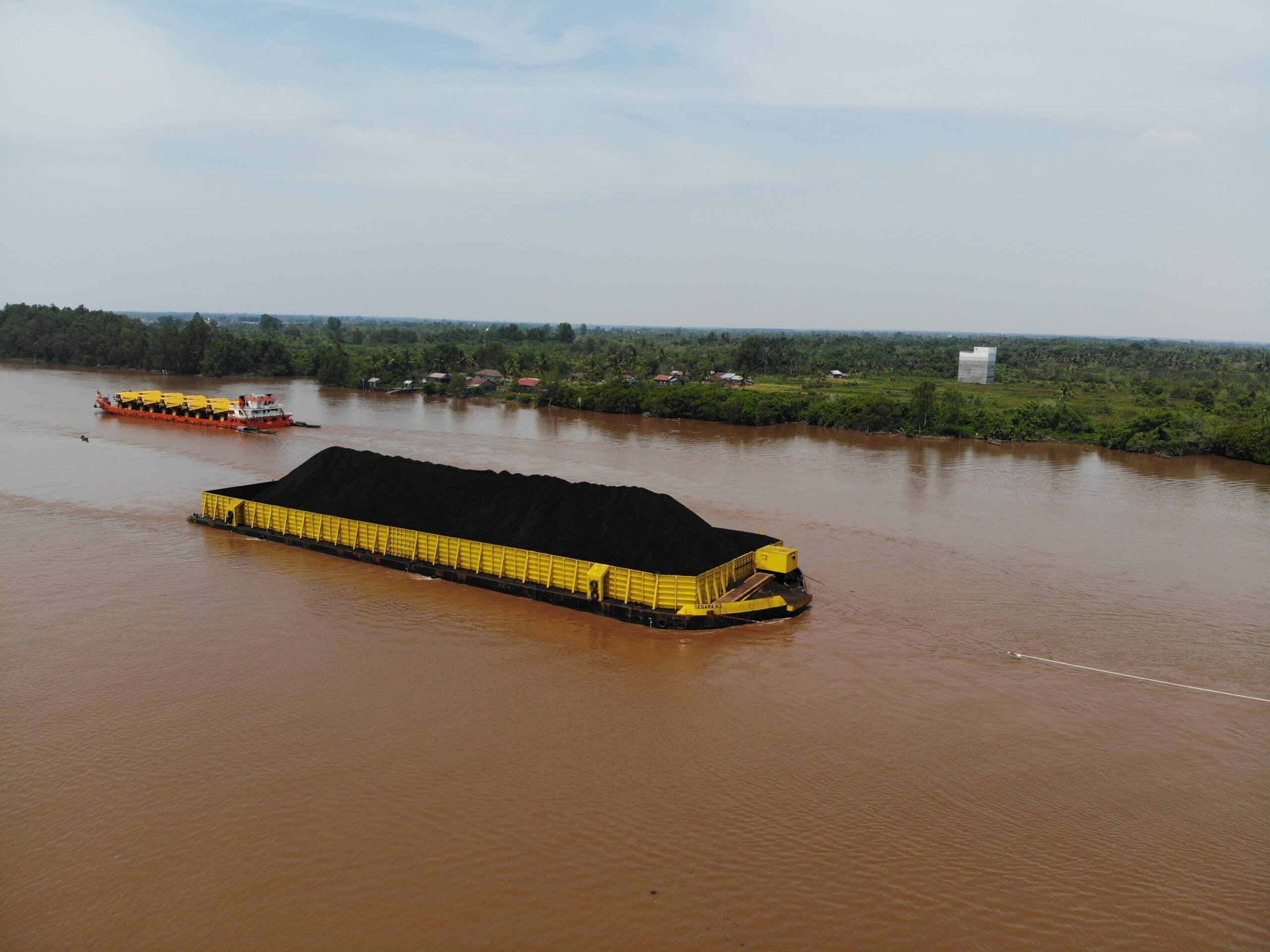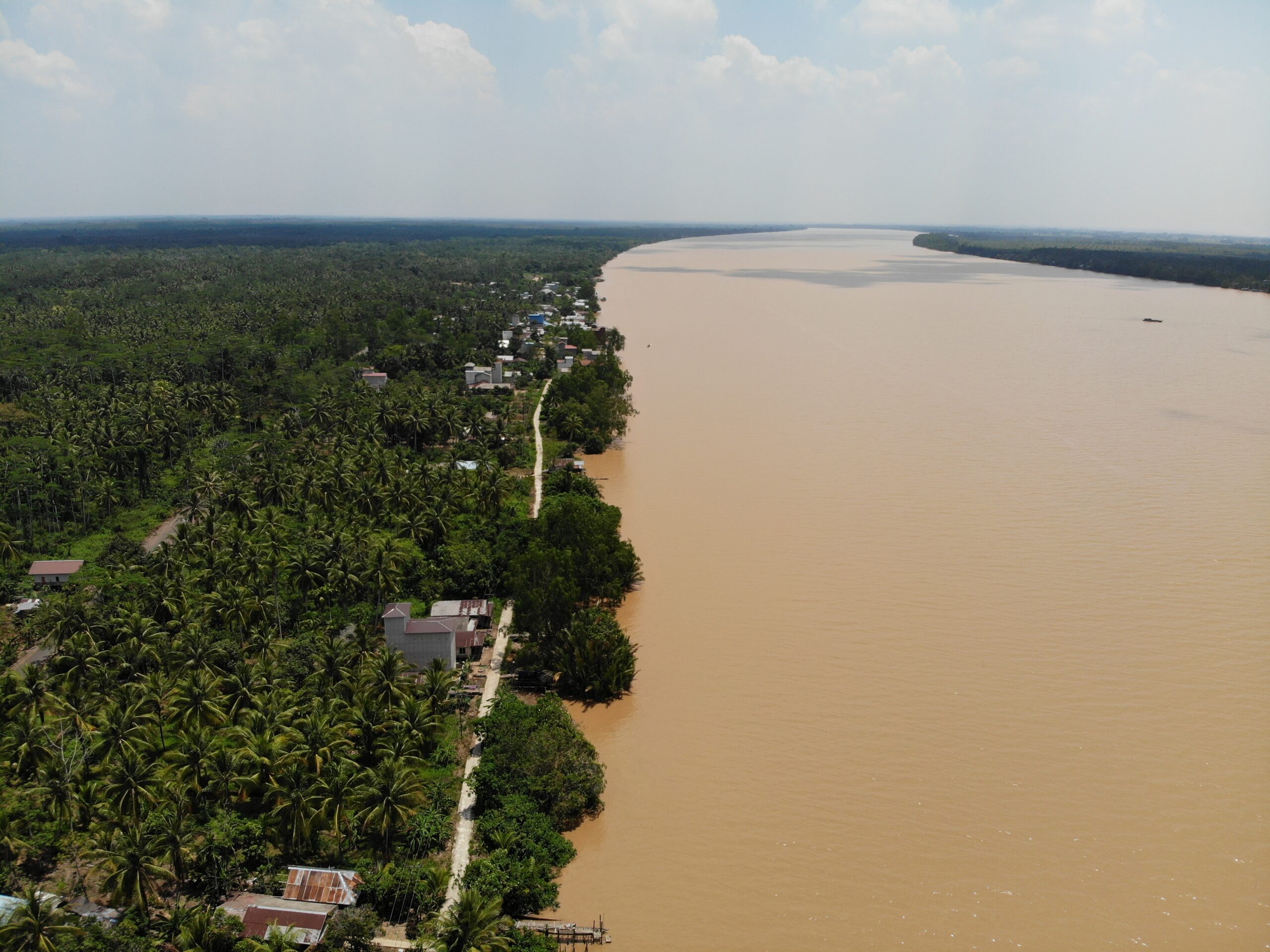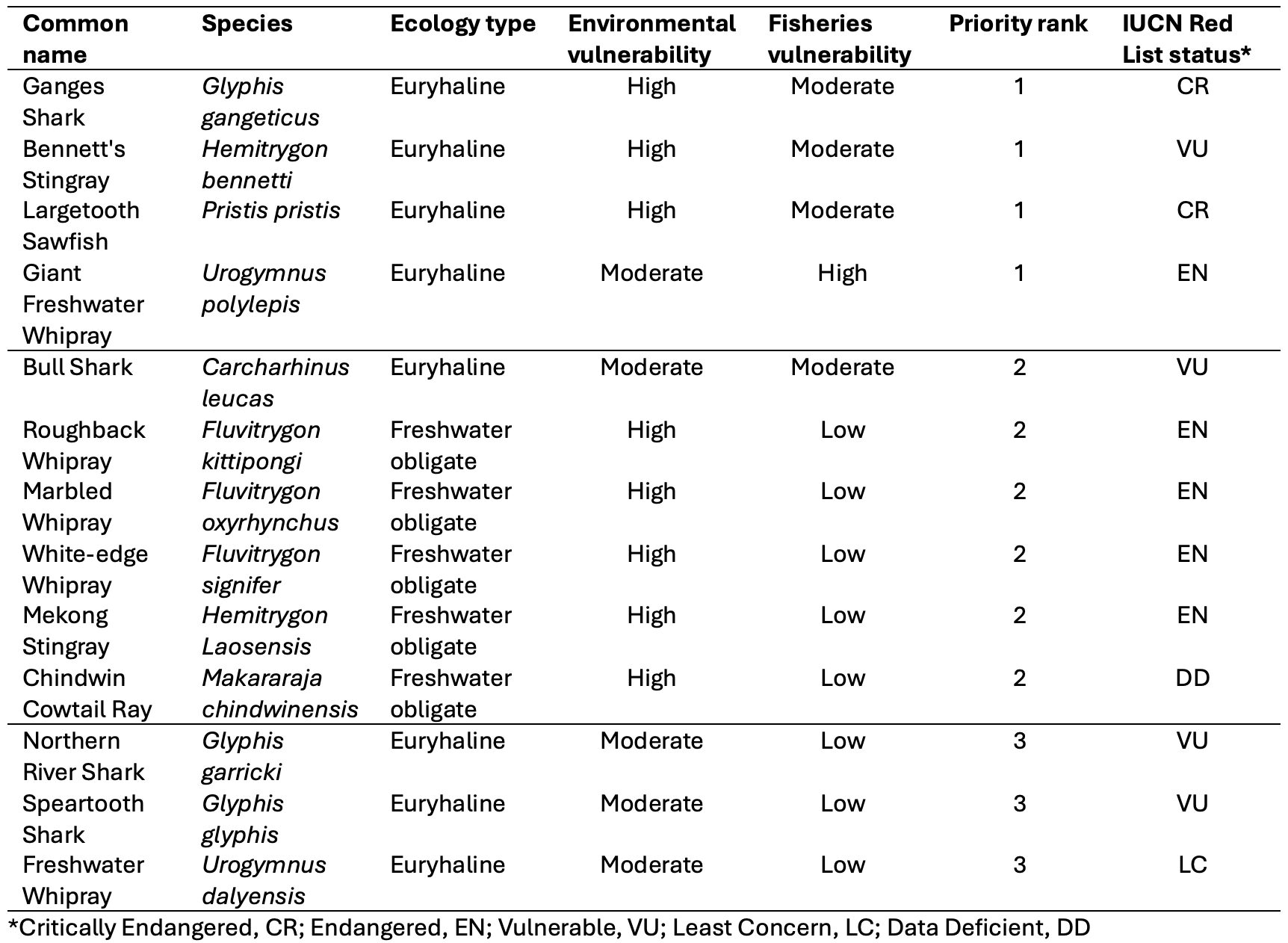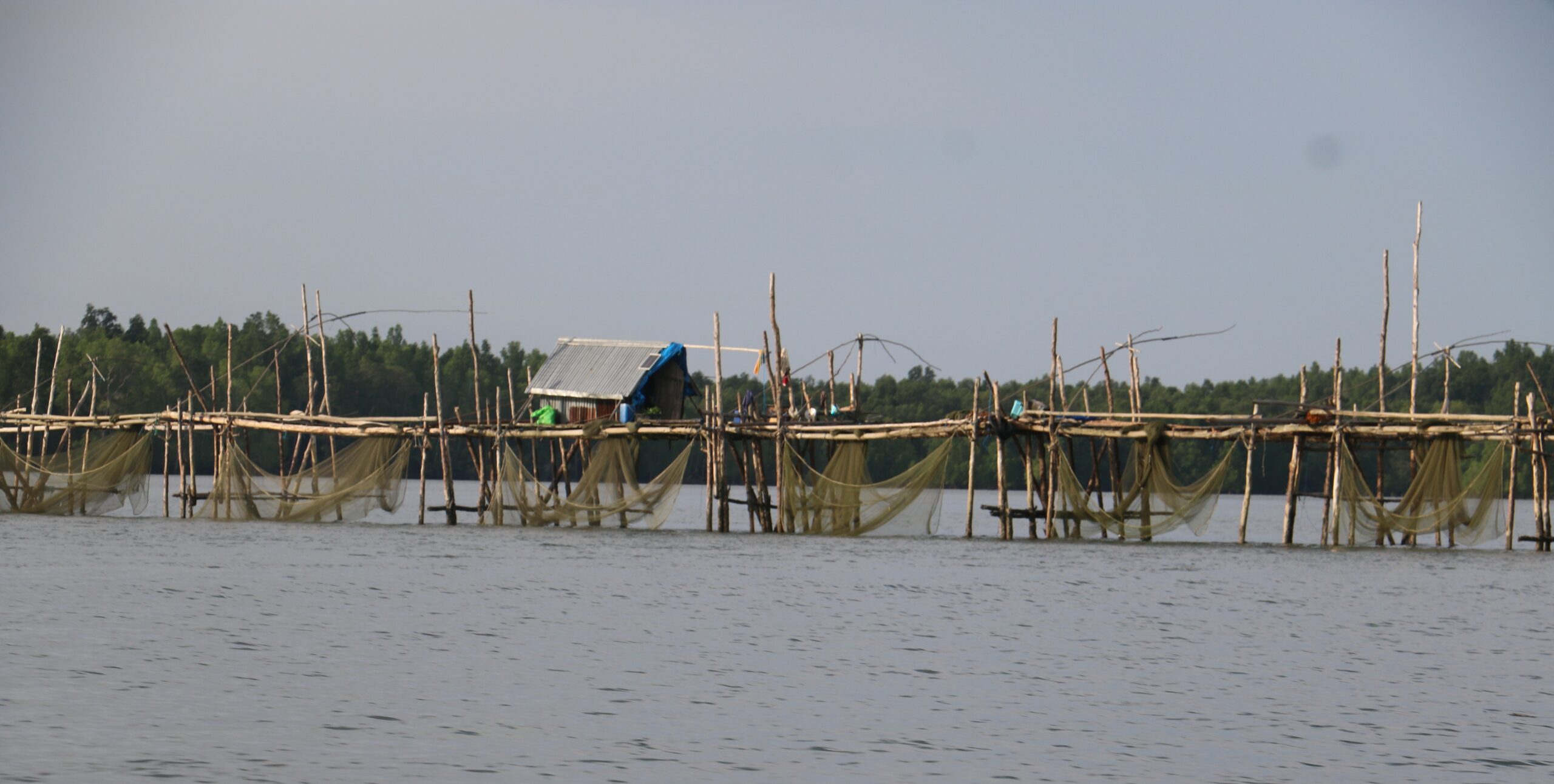Assessing the Vulnerabilities of Indo-West Pacific Non-Marine Elasmobranchs
Freshwater environments are some of the most biodiverse habitats on Earth, housing one-third of all vertebrate species and nearly half of all fish species. Sadly, this diversity is rapidly declining, with freshwater vertebrate populations decreasing at twice the rate of marine and terrestrial populations. Non-marine elasmobranchs (sharks and rays) are particularly vulnerable, yet often overlooked by conservation efforts. This Save Our Seas Foundation-funded project focuses on these species and the risks they face.

Mining is a present threat across much of the Indo-West Pacific’s freshwater catchments. Distribution and impact of mines in this study were assed using data from Maus et al. (2020). Photo © Michael Grant
In 2023 we published a study (Mather et al., 2023) that assessed the conservation priorities for Indo-West Pacific non-marine elasmobranch species, using a vulnerability assessment framework. This study aimed to understand the macro-level risks faced by these species from environmental degradation and fisheries pressures. The results highlight the most vulnerable species and areas, providing crucial information for future conservation planning.
Vulnerability Assessment Framework
This study used an exposure sensitivity adaptability (ESA) framework to assess the vulnerability of each species to environmental threats, and an exposure susceptibility productivity (ESP) framework to assess vulnerability to fisheries.
- ESA Framework: Assesses vulnerability to environmental pressures like pollution, damming, and climate change.
- ESP Framework: Assesses vulnerability to fisheries threats, considering factors like aquatic protein consumption, fishing effort, and species productivity.
We assessed all 13 non-marine elasmobranch species in the Indo-Pacific (Table 1). Six of these are freshwater obligate species that spend their whole lives in freshwater, while seven are euryhaline species which move between freshwater and marine habitats during their life histories (Grant et al. 2019). For euryhaline species, we only considered their freshwater habitat ranges. In total, environmental degradation and fisheries threats were assessed across 12 nations; Pakistan, India, Bangladesh, Myanmar, Indonesia (Sumatra, Kalimantan and Java only), Malaysia (Peninsular and Borneo), Thailand, Lao People’s Democratic Republic (herein, Laos), Cambodia, Vietnam, China, Brunei, Papua New Guinea, and northern Australia (Western Australia, Northern Territory, and Queensland).

Palm oil plantations are a leading cause of deforestation in southeast Asia. Clearing of forests for agriculture leads to increased sedimentation within rivers. Percentage of land converted for agricultural use in this study was assed using data from CIA World Factbook (2021). Photo © Michael Grant
Key Findings
The study categorised species vulnerabilities into three conservation priority tiers:
- Priority 1 (Highest Vulnerability): Large-bodied euryhaline species (those that can tolerate a range of salinity) in densely populated nations faced the highest environmental and fisheries vulnerabilities.
- Priority 2 (Moderate Vulnerability): Freshwater obligates also had high environmental vulnerability, though fisheries vulnerability was relatively reduced owing to suspected high productivity of these smaller bodied species.
- Priority 3 (Lowest Vulnerability): Euryhaline species with large range proportions in northern Australia had moderate to low vulnerability, benefiting from reduced fisheries mortality and lesser environmental impacts.

Table 1. Overall relative conservation priority non-marine elasmobranch species, based on the vulnerability assessments for both environmental [exposure sensitivity adaptability (ESA)] and fisheries [exposure susceptibility productivity (ESP)].
The conservation priority rankings aligned with the International Union for Conservation of Nature (IUCN) Red List status, with priority 1 and 2 species also having elevated extinction risks. Environmental threats were high or moderate in all nations assessed, with Cambodia, China, Malaysia, and Myanmar facing the highest pressure from inland fisheries.
High Environmental Threats
The study revealed that these non-marine sharks and rays face high levels of environmental threats across all the countries assessed. The Pearl River in China is particularly under pressure, with significant damming, poor water quality, and severe climate change impacts. Climate change was identified as the most widespread threat, emphasising again the urgent need to address its impacts on freshwater environments.

Freshwater fisheries use a large variety of fishing gears. ‘Stationary trawls’ are commonly used in sheltered waters of tropical rivers where fishers can take advantage of river flow in upper river areas or tidal flows closer to the estuary. Inland fisheries production and aquatic (freshwater) protein consumption were used to infer intensity of fishing activity in this study using data from Funge-Smith (2018). Photo © Michael Grant
What this means for conservation
These findings have significant implications for conservation efforts:
- Prioritize Vulnerable Species and Nations: The study identifies key species and nations that require immediate conservation attention, such as those in the Mekong River basin, and Myanmar.
- Address Key Threats: There is a need to mitigate environmental degradation from damming, mining, and fisheries, to enhance population resilience against climate change.
- Improve Data Collection: The assessment revealed major knowledge gaps, including species-specific productivity estimates, population dynamics, and mortality information from threats assessed.
This research provides a crucial overview of the vulnerability of non-marine elasmobranchs in the Indo-West Pacific. By identifying high-priority species and nations, and highlighting key threats, this study offers valuable guidance for future conservation planning and resource allocation. Further details of this study are available here.
**References
CIA World Factbook. (2021). The world factbook. Washington, DC: United States Central Intelligence Agency. https://www.cia.gov/the-worldfactbook/
Funge-Smith, S.J. (2018). Review of the state of world fishery resources: inland fisheries. FAO Fisheries and Aquaculture Circular No. C942 Rev.3, Rome: Food and Agriculture Organisation of the United Nations.
Grant, M.I., Kyne, P.M., Simpfendorfer, C.A., White, W.T. & Chin, A. (2019). Categorising use patterns of non-marine environments by elasmobranchs and a review of their extinction risk. Reviews in Fish Biology and Fisheries 29, 689-710.
Mather, R., Chin, A., Rigby, C., Cooke, S. J., Fahmi, Haque, A. B., Mizrahi, M. & Grant, M. I. (2023). Murky waters: Assessing the vulnerabilities of Indo-West Pacific non-marine elasmobranchs to inform future conservation planning priorities. Aquatic Conservation: Marine and Freshwater Ecosystems 34(1), e4039. https://onlinelibrary.wiley.com/doi/10.1002/aqc.4039
Maus, V., Giljum, S., Gutschlhofer, J., da Silva, D.M., Probst, M., Gass, S.L.B. et al. (2020). A global-scale data set of mining areas. Scientific Data, 7, 289. https://doi.org/10.1038/s41597-020-00624-w
